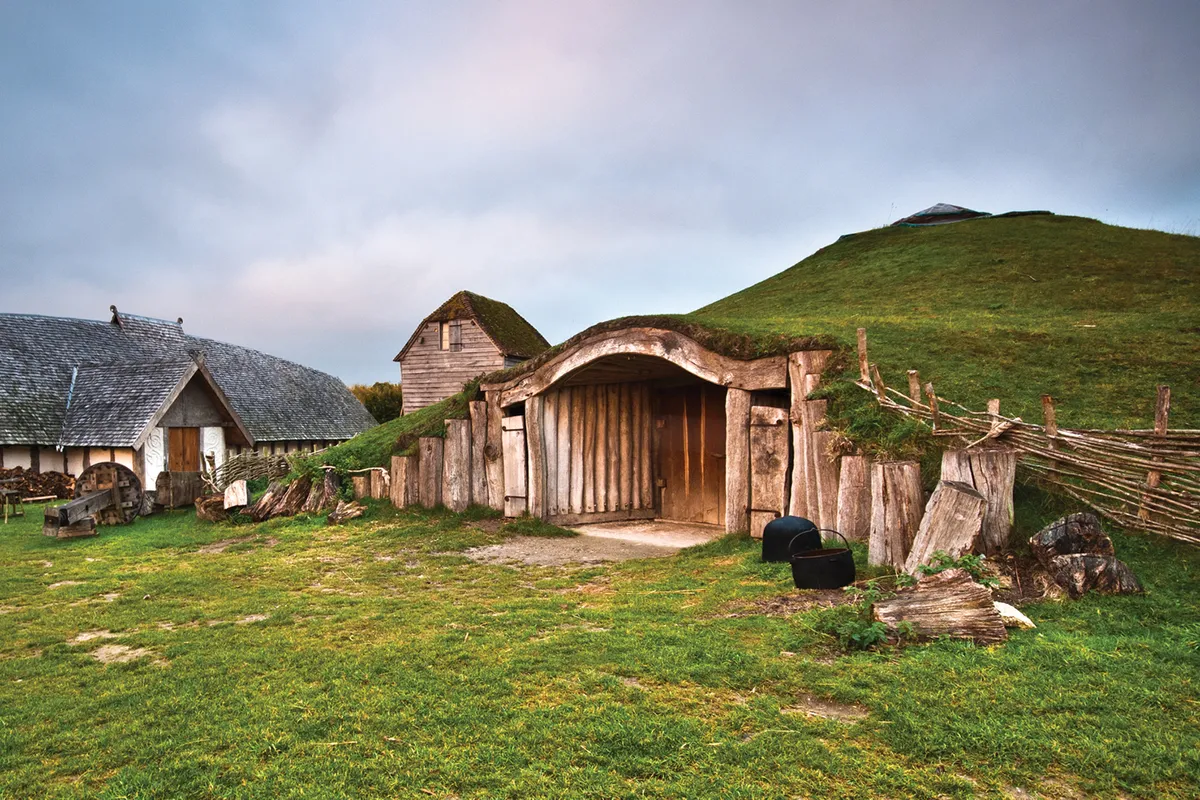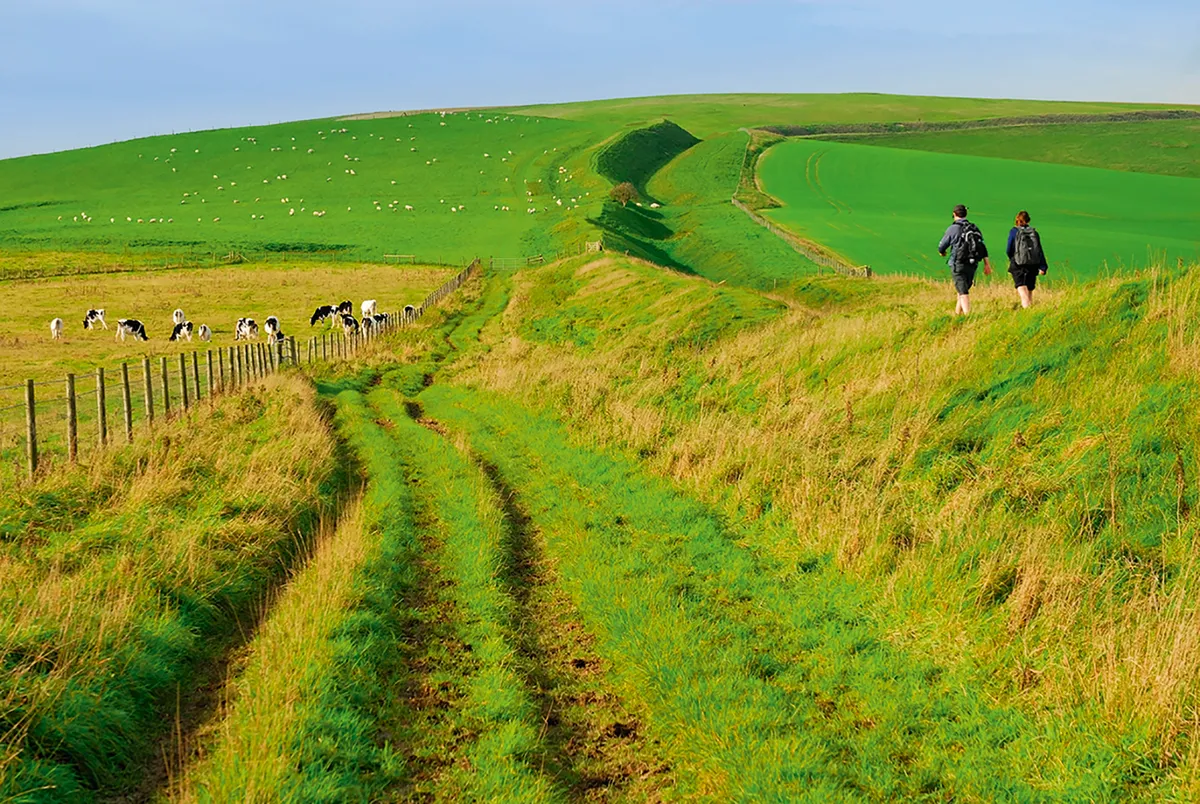When were the Dark Ages in the UK?
The Dark Ages are estimated to have stretched from 500 to 1066 AD. Essentially from the fall of the Roman Empire to the Battle of Hastings in Britain.
After the end of Roman Britain, the land became a melting pot of Britons, Anglo Saxons and Vikings – all of whom variously shaped the character of the countryside.
Why do we call them the Dark Ages?
History is full of references to 'dark times' and 'light times', so why have we singled out the period 500 to 1066 as the Dark Ages? It is in part due to the scarcity of written sources from this time, leaving historians in the dark. The other part due to the fall of the Roman Empire that plunged Europe into a period of cultural and scientific stagnation.
Even so, as we learn more about this early medieval period, historians increasingly use the term Middle Ages synonymously with Dark Ages to refer to this mysteriously shrouded time in our history.
Who lived in Britain in the Dark Ages?
An amalgamation of peoples converged on Britain during the Dark Ages:
Britons, inhabitants of Britain that remained after the end of Roman rule.
Anglo-Saxons, Germanic tribes from northern Europe had started to arrive across the sea by 500 AD.
Vikings, invaders from Scandinavia who raided much of the British Isles.

What traces of the Dark Ages remain today?
When the Anglo-Saxons arrived in Britain they were greeted by crumbling Roman cities, bridges and roads. Their impressions of this worn landscape can be seen in many of their Old English place names, which marked them out as remnants of a bygone age. For example, Chester was named ceaster by the Anglo-Saxons, whose Latin root means 'military camp'.
Other place names hint at the Anglo-Saxons' imaginative landscape - the supernatural creatures they believed to inhabit the groves and valleys. Just outside Durham there is a village called Shincliffe, which means ‘slope of the spectre or demon’ in Old English.
The best Dark Ages sites to visit in Britain
Sutton Hoo, Suffolk
The most famous Anglo-Saxon site, including a sumptuous 7th-century ship burial mound. The powerful King Rædwald of East Anglia is thought to be the occupant. Finds here include the famous Sutton Hoo helmet (British Museum). nationaltrust.org.uk/sutton-hoo
The story has now been turned into the film The Dig
West Stow, Suffolk
Now an archaeological site and open-air museum in Suffolk, West Stow was home to an Anglo-Saxon village from the 5th to 7th centuries. Many of the reconstructed houses are ‘sunken-featured buildings’, partly dug into the ground and covered with a roof. Visit the village to see how early Anglo-Saxons lived and worked – and even meet old breeds of livestock. weststow.org

Ancient Technology Centre, Dorset
With its Neolithic log cabin, Iron Age roundhouse, Roman forge, Anglo-Saxon workshop, Viking longhouse and ancient farmstead, this atmospheric centre provides opportunities to experience what life on the land was like throughout these early historical periods. ancienttechnologycentre.co

Wansdkye, Wiltshire and Somerset
Its name associated with the pagan god Woden (Woden’s Dyke), sections of this earthwork stretch for 56km through the West Country. In some places the bank is 4m high and the ditch over eight feet deep, and it may have been built both to defend territory and control trade and transport in the region.

Gosforth Cross, Cumbria
Dating to the 900s, the Gosforth Cross stands in St Mary’s churchyard. It blends Christian imagery – such as the crucifixion of Christ – with images of pagan Norse gods: Loki bound and tortured, Thor wrestling the Midgard Serpent, Vidar forcing apart the jaws of the monstrous wolf Fenrir.

Jorvik Viking Centre, Yorkshire
Following the discovery of timber buildings, workshops, privies, pits, pottery, metalwork and bones from Viking Age York, the Jorvik Viking Centre was established 1984. Travel back in time to experience the sights, smells and sounds of the town. jorvikvikingcentre.co.uk

Lindisfarne Priory, Northumberland
The priory on the tidal island of Lindisfarne was an important Christian centre from the 6th century, home to the Lindisfarne Gospels. In 793 AD It saw the first major Viking raid, sending shockwaves through Europe. english-heritage.org.uk/visit/places/lindisfarne-priory

Jarrow Hall, Northumberland
Discover the life of 8th-century monk and chronicler, Bede, who lived at Jarrow monastery. Here you can walk around the reconstructed village and farm, visit the rare-breed animals, and explore the nearby ruins of the Anglo-Saxon monastery. jarrowhall.org.uk

Maldon, Essex
Down on the Blackwater Estuary, this is the site of a famous battle fought between the Anglo-Saxons and Vikings in 991 AD, commemorated in the Old English poem, The Battle of Maldon. The Anglo-Saxons lost, but the poem is embedded in the physical landscape, and clearly written by someone who knew the area and its inhabitants.

St Gregory's Minster, Yorkshire
This late Anglo-Saxon church has a sundial with an inscription that begins “Orm, son of Gamal, bought St Gregory’s Minster when it was all ruined and collapsed…” ‘Orm’ and ‘Gamal’ are Norse names, although the inscription is written in Old English, suggesting they assimilated into the local culture.

Alfred the Great's Walls, Wareham, Dorset
During King Alfred’s struggles against the Vikings in the late 9th century, Wareham became one of his fortified towns, surrounded by defensive earthworks that can still be seen (and walked along) today. Fortified towns were key to Alfred’s ultimate success.
Words: Eleanore Rosamund Barraclough
